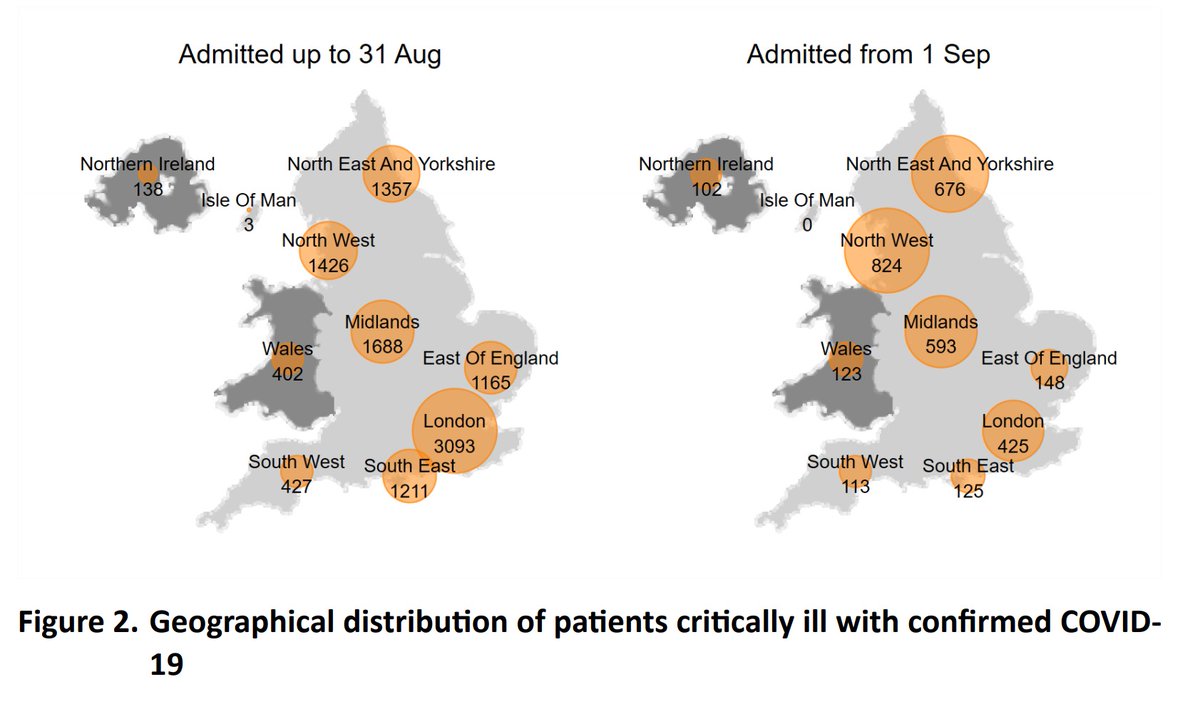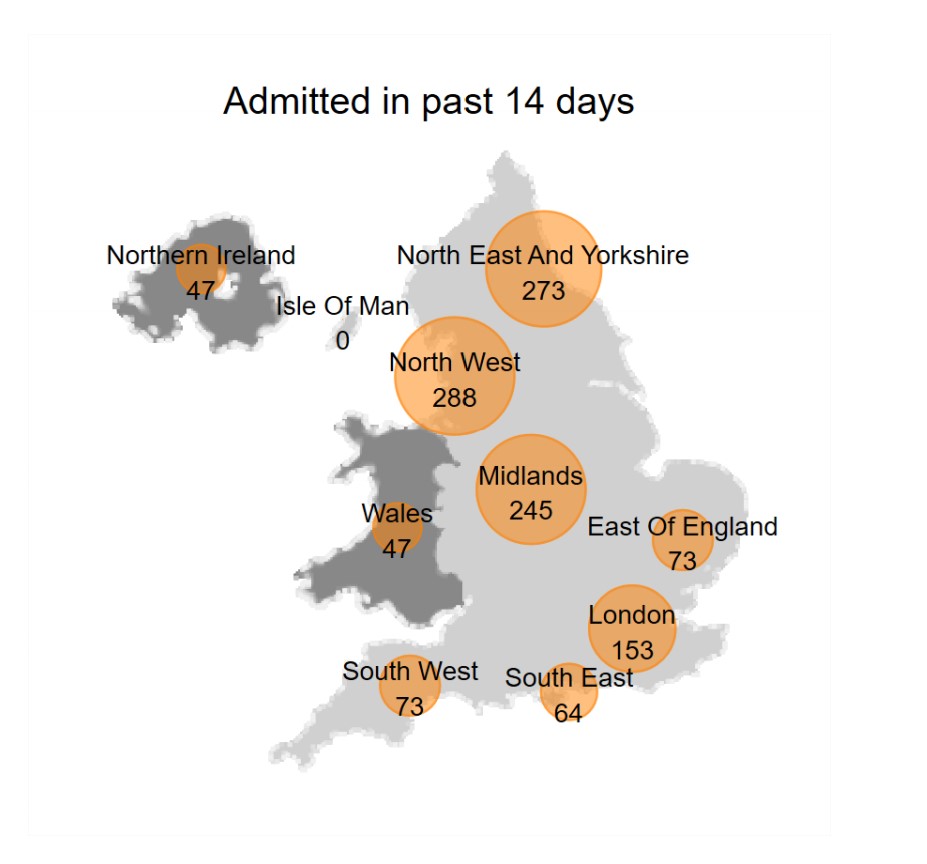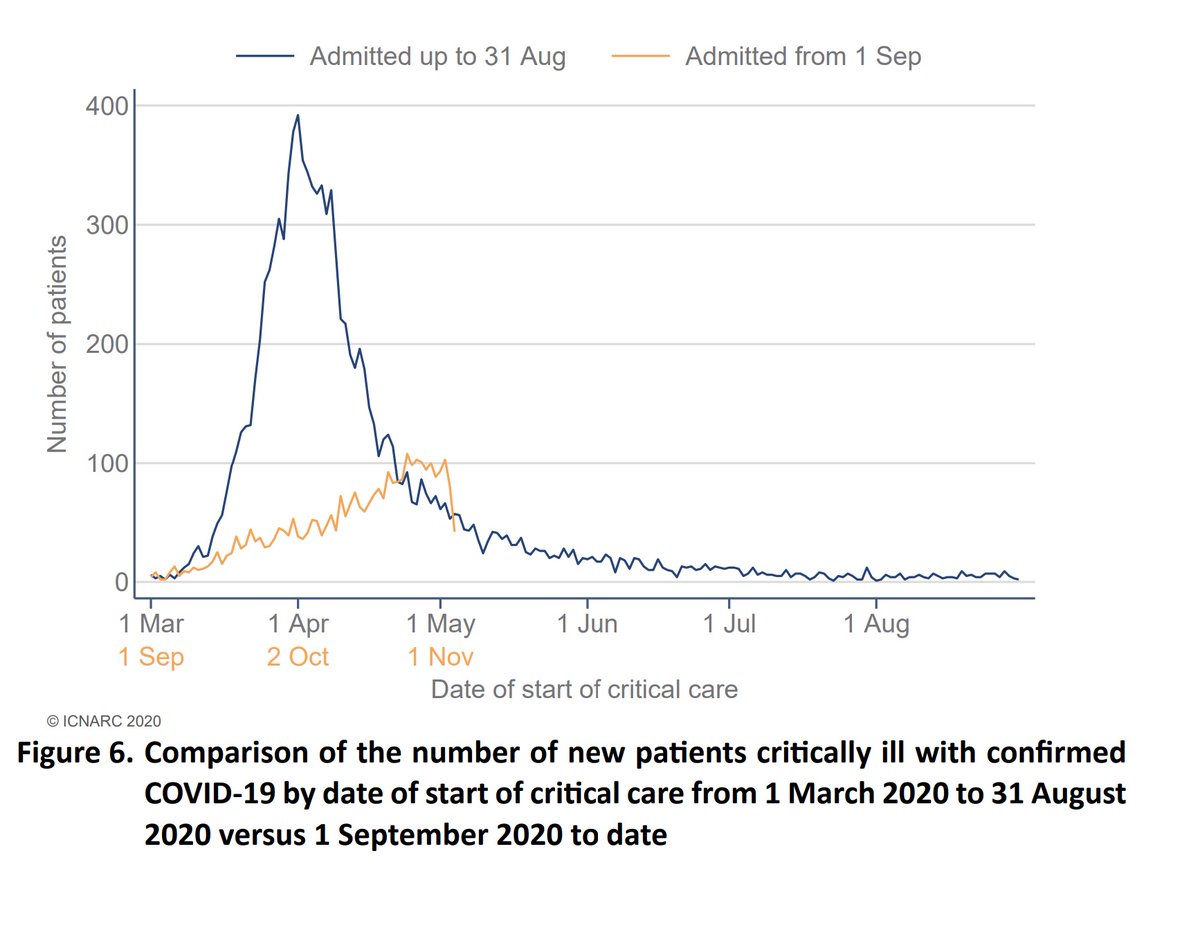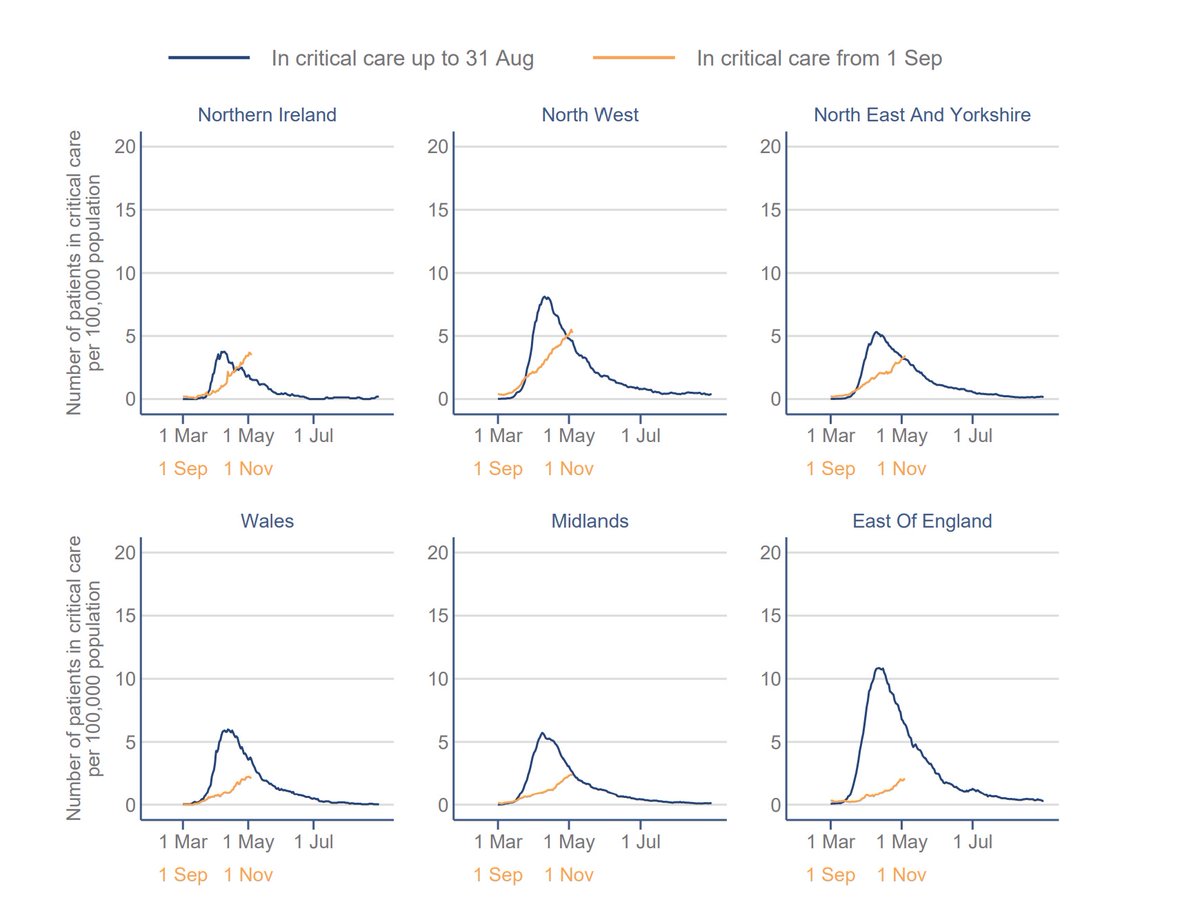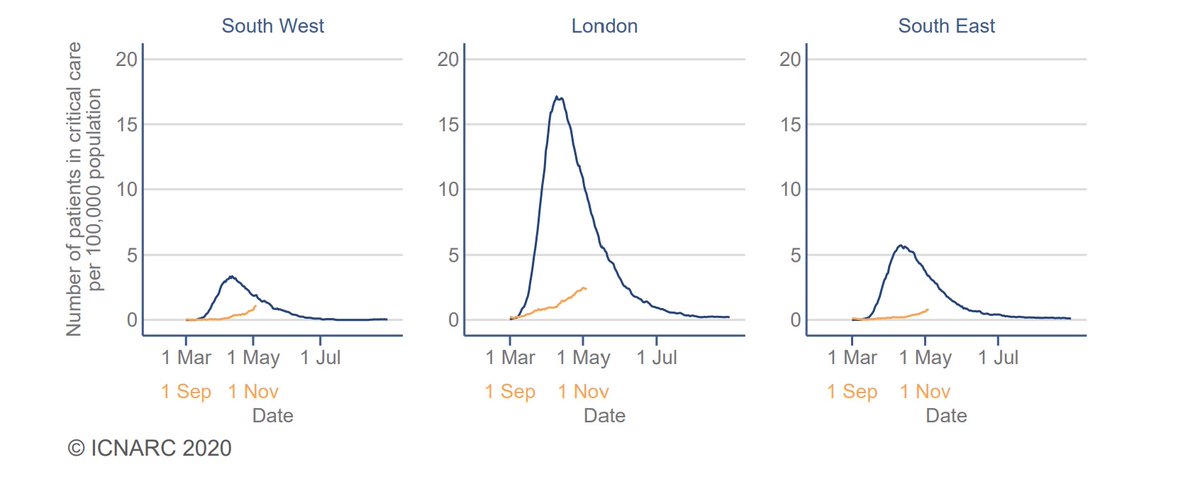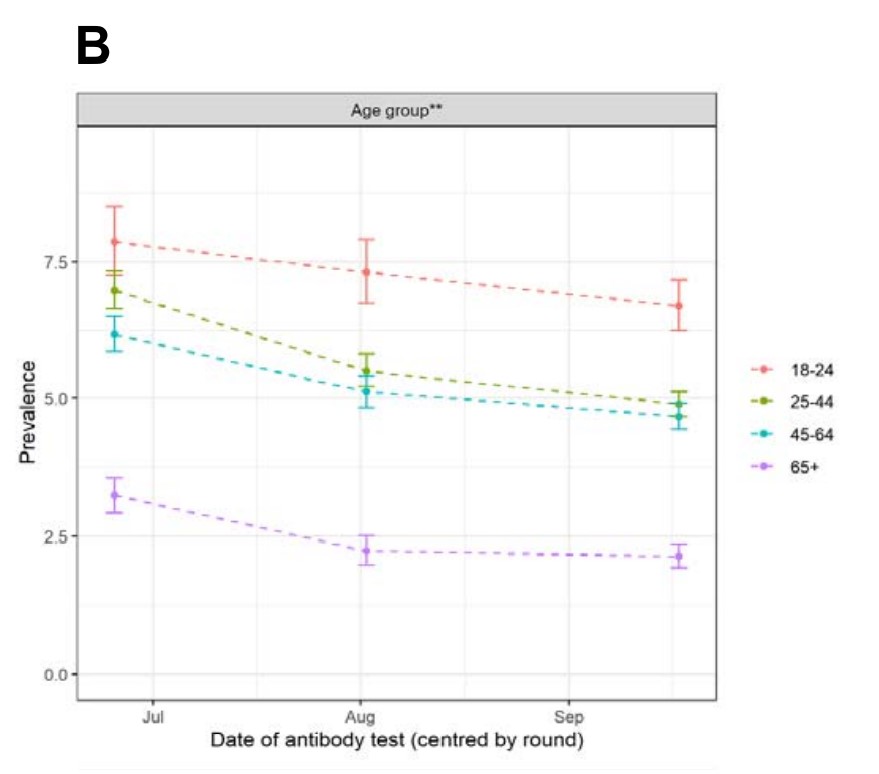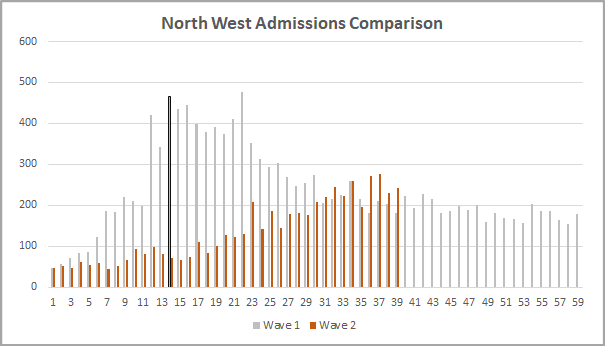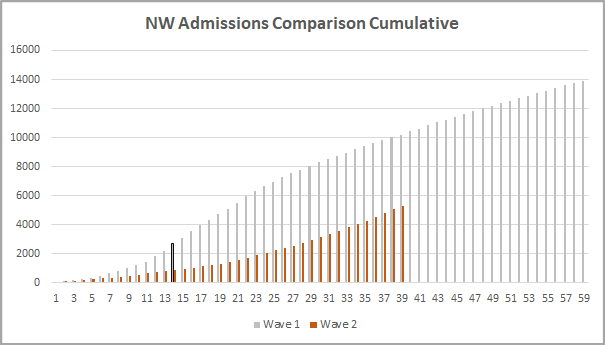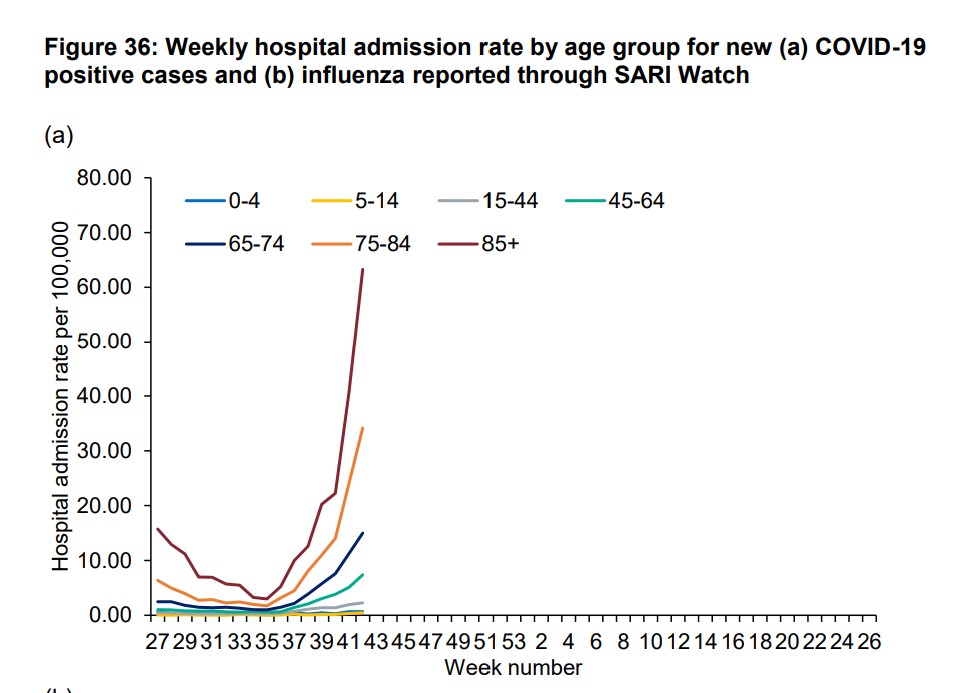
The latest @ONS infectivity survey has been released. For England ONS suggests that new infections have levelled off at around 50,000 per day. (The estimate has reduced from 51,900 to 45,700, but this must be seen in the context of the confidence intervals around each one.) 1/6 

Overall infections have increased, albeit more slowly, from 568k to 619k, being 1 in 90 of the community. Remember that this survey excludes healthcare settings, including care homes. 2/6 

The regional picture shows a clear reduction in the NW, consistent with the levelling off in admissions that @COVID19actuary has been reporting of late. Other regions appear to be stabilising too. 3/6 

By age, there's a clear reduction in older school ages and younger adults. The position is less clear though in older age groups, which influence hospital admissions figures. 4/6 

The other countries are all showing increases. Wales increases from 1 in 120 to 1 in 110, Scotland to 1 in 110 (140), and NI to 1 in 75 (80). However, the CI's are large, (eg Wales is 1 in 60 to 1 in 250), so these need to be treated with some caution. 5/6
Thanks as always to @ONS and its partner organisations for continuing to produce timely and objective data to help us understand the current course of the pandemic. 6/6 END 

• • •
Missing some Tweet in this thread? You can try to
force a refresh

